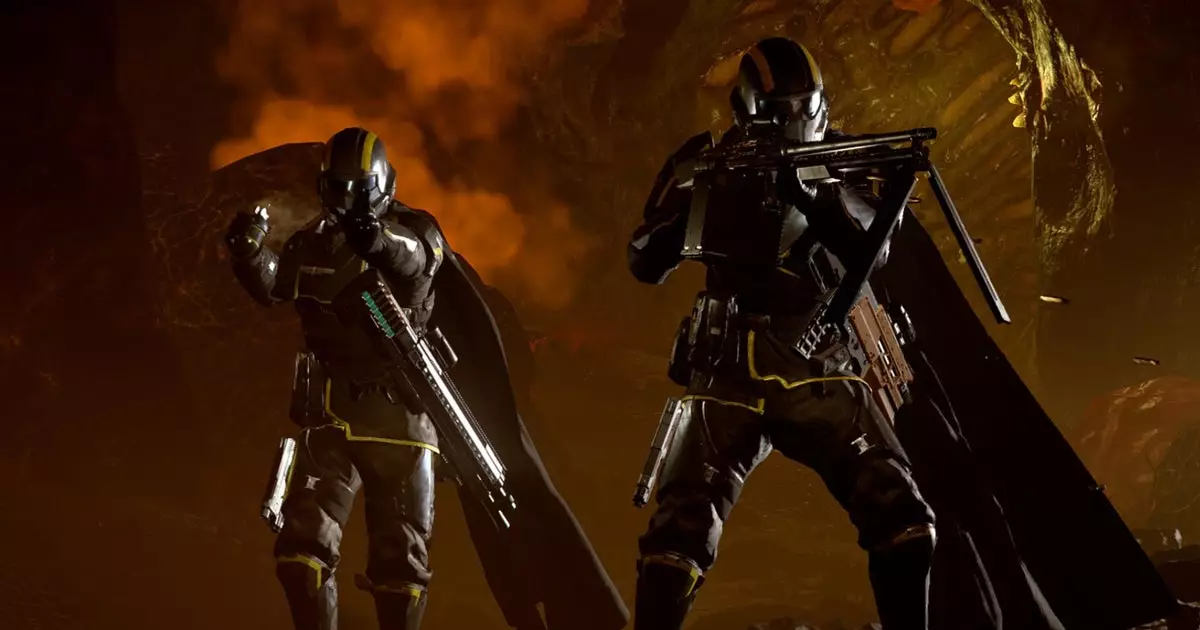In the ever-evolving landscape of competitive and cooperative multiplayer gaming, developers often face a delicate balancing act: how to introduce challenging enemies that excite players without tipping the scales into frustration. Arrowhead Studios’ recent decision to temporarily remove the Rupture Strain enemies from Helldivers 2 exemplifies a commendable commitment to player enjoyment over stubborn adherence to initial design assumptions. Instead of stubbornly insisting that the problematic enemies stay live, the studio has shown a willingness to hit pause, reflect, and adjust, emphasizing quality over quantity.
This move signals a profound understanding that tactical challenge should foster engagement, not alienation. By pulling the Rupture Strain offline for around five weeks, Arrowhead recognizes that unbalancing enemies threaten to disrupt the core enjoyment of the game, risking the satisfaction players derive from overcoming obstacles. It is a bold, proactive stance that prioritizes the player’s long-term experience rather than rushing out patches to keep the content “fresh” regardless of playability.
Public perception of such a decision underscores a broader industry shift towards transparency and humility. Rather than covering up the issues or insisting that players adapt to bugs, the developers openly admit that the tools meant to challenge players have become problematic. This transparency fosters trust, transforming potential criticism into appreciation, as fans see genuine effort to create a fairer, more enjoyable environment.
Understanding the Complexity of Enemy Design and the Challenges of Balance
The Rupture Warriors, initially designed as formidable foes, underestimated their impact once their mechanics were set into motion but later spiraled out of intended balance. Their ability to surprise and eliminate players instantly should be a thrilling component of gameplay, but when it crosses into unfair territory, it quickly derails the fun. The development revelation that the issue stemmed from a networking flaw illustrates how technical intricacies can inadvertently influence gameplay mechanics.
This episode highlights a critical truth in game development: enemy behavior is often intertwined with underlying technical systems, which makes tuning challenging. Developers aim for a nuanced difficulty curve; however, network issues can introduce unpredictability, leading to enemies acting in unintended ways. Arrowhead’s decision to remove the Rupture Strain demonstrates an understanding that sometimes, the complex technical roots of a problem demand a more straightforward solution—temporarily removing the problematic content while addressing the core issues.
Furthermore, this incident underscores the importance of iterative testing and communication. The studio’s willingness to acknowledge these setbacks and communicate openly with their community fosters a sense of shared problem-solving. It also serves as a reminder that creating balanced, challenging content is a nuanced process where technical constraints can heavily influence gameplay.
Learning Through Mistakes: Commitment to Long-Term Quality
Arrowhead’s approach reveals a deeper philosophical stance that prioritizes a sustainable and satisfying player experience over quick fixes and fleeting patches. By removing the Rupture Strain enemies temporarily, they are embracing a philosophy of quality assurance that respects the game’s integrity and the players’ patience. It’s a recognition that rushing to reintroduce enemies without proper fixes risks undermining trust and enjoyment.
This decision is also strategically sound from a community engagement perspective. Transparent communication about delays and issues demonstrates accountability, which ultimately enhances player loyalty. Players are more prone to accept and appreciate updates when they see developers openly admit shortcomings and actively work to improve.
Additionally, the incident highlights the ongoing challenge of balancing difficulty against fairness. The game’s core appeal, as with many multiplayer experiences, hinges on providing enough challenge to keep players engaged but not so much that it becomes unfair or discouraging. Arrowhead’s move to step back and reassess indicates an understanding that high difficulty should serve as an incentive, not an impenetrable wall.
While some might view the temporary removal of enemies as a setback, it actually signals courage and dedication. In a gaming industry often criticized for rushed releases and poorly tested content, Arrowhead’s willingness to prioritize quality and transparency sets a high standard. They show that delivering a compelling, challenging experience does not mean sacrificing fairness or long-term player engagement. Sometimes, the best move a developer can make is to acknowledge their limits and take a strategic pause—leaving room to polish, refine, and ultimately deliver a more satisfying experience for all players involved.

